IAQ Responsibility
Internal Air Quality (IAQ) falls under the purview of Health and Safety for several compelling reasons:
- Occupant Health:
- The primary objective of Health and Safety is to safeguard the well-being of individuals within a workplace.
- IAQ directly impacts the health of occupants. Poor air quality can lead to respiratory issues, allergies, and other health concerns, aligning with the core responsibility of Health and Safety to prevent harm to individuals.
- Regulatory Compliance:
- Many occupational health and safety regulations require organizations to provide a safe and healthy working environment.
- IAQ often intersects with these regulations, necessitating Health and Safety departments to monitor and address air quality concerns to ensure compliance.
- Risk Mitigation:
- Health and Safety professionals are trained to identify and mitigate risks in the workplace.
- IAQ issues, such as the presence of pollutants or inadequate ventilation, pose potential health risks. Health and Safety teams are well-equipped to assess and manage these risks.
- Employee Productivity and Well-being:
- Poor IAQ can lead to decreased productivity and increased absenteeism due to health-related issues.
- Ensuring optimal air quality aligns with the broader goal of Health and Safety to create a work environment that promotes employee well-being and productivity.
- Emergency Response:
- Health and Safety teams are often the first responders in emergencies.
- IAQ issues, such as the presence of harmful substances, may require immediate action to protect the health of occupants, making Health and Safety integral in managing such situations.
- Cross-Functional Collaboration:
- Addressing IAQ concerns often requires collaboration with various departments, including Facilities Management and Environmental Health.
- Health and Safety acts as a bridge, coordinating efforts across different disciplines to comprehensively manage IAQ.
- Training and Education:
- Health and Safety professionals are well-versed in training and educating employees on safety practices.
- Educating individuals about the importance of IAQ, recognising symptoms of poor air quality, and promoting preventive measures are integral aspects of Health and Safety responsibilities.
In summary, internal air quality is the responsibility of Health and Safety because it directly aligns with their core mandate of ensuring a safe and healthy work environment for all occupants.


